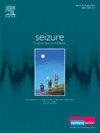1990年至2021年儿童癫痫的全球、区域和国家流行病学:基于GBD 2021的系统研究
IF 2.8
3区 医学
Q2 CLINICAL NEUROLOGY
引用次数: 0
摘要
癫痫是儿童中最常见的慢性神经系统疾病之一,造成了巨大的全球疾病负担,其特征是神经发育障碍、过早死亡和社会经济成本增加。本研究旨在评估1990年至2021年与儿童癫痫相关的全球发病率、死亡率和残疾调整生命年(DALYs),确定关键危险因素,评估地区和国家之间的差异,同时预测到2035年与儿童癫痫相关的全球疾病负担。该流行病学分析利用2021年全球疾病负担研究(GBD 2021)的横断面数据,系统调查1990-2021年期间全球204个司法管辖区0-14岁儿童癫痫趋势。该研究采用了一个综合分析框架来评估疾病发病率、死亡率和DALYs,以及它们的估计年百分比变化(EAPCs)。根据地理分布、国界、人口统计变量(年龄和性别)和社会人口统计指数(SDI)进行分层。利用自回归综合移动平均(ARIMA)模型预测到2035年的儿童癫痫趋势。结果2021年,全球儿童癫痫发病人数达到1227,191例,比1990年增长26.3%,发病率从每10万人55.9例上升到61.0例。死亡率下降了29.5%(每10万人1.5至0.9人),DALYs下降了14.9% (EAPC分别为- 1.39和- 0.94)。社会经济差异明显:低SDI地区死亡率最高(每10万人1.5人),DALYs(每10万人244.5人),而高SDI地区发病率最高(每10万人70.7人)。厄瓜多尔(每10万人120.1人)和塔吉克斯坦(每10万人2.8人)的发病率和死亡率分别最高。癫痫病相关死亡的唯一危险因素是大量饮酒,占15.0%。对2035年的预测显示,儿童癫痫病例将增加,死亡人数和残疾调整生命年将进一步下降。结论:儿童癫痫仍然是一个日益严重的全球健康问题,尽管死亡率和伤残调整生命年持续下降,但发病率仍在上升。尽管随着时间的推移,医疗保健的进步有助于减少与癫痫有关的死亡和残疾调整生命年,但这种神经系统疾病的绝对负担仍然很大,特别是在儿科人群中,地区差异很大。这些发现强调了加强早期筛查计划和提高抗癫痫药物可及性的迫切需要,特别是在低SDI地区。本文章由计算机程序翻译,如有差异,请以英文原文为准。
Global, regional, and national epidemiology of childhood epilepsy from 1990 to 2021: a systematic study based on the GBD 2021
Background
Epilepsy is one of the most prevalent chronic neurological disorders in children, imposing a substantial global disease burden characterized by neurodevelopmental impairments, premature mortality, and heightened socioeconomic costs. This study aimed to evaluate the global incidence, mortality, and disability-adjusted life years (DALYs) associated with childhood epilepsy from 1990 to 2021, identify key risk factors, and assess differences between regions and countries, while also predicting the global disease burden associated with childhood epilepsy up to 2035.
Method
This epidemiological analysis utilized cross-sectional data from the Global Burden of Disease Study 2021 (GBD 2021) to systematically investigate childhood epilepsy trends among individuals aged 0–14 years across 204 global jurisdictions over the period 1990–2021. The study employed a comprehensive analytical framework to assess disease incidence, mortality, and DALYs, alongside their estimated annual percentage changes (EAPCs). Stratification was performed based on geographical distribution, national boundaries, demographic variables (age and sex), and the Socio-demographic Index (SDI). Forecasting of childhood epilepsy trends until 2035 utilized the Autoregressive Integrated Moving Average (ARIMA) model.
Results
In 2021, the incident number of global childhood epilepsy reached 1227,191 cases (26.3 % increase since 1990), with an incidence rate rising from 55.9 to 61.0 per 100,000. Mortality declined by 29.5 % (1.5 to 0.9 per 100,000), and DALYs decreased by 14.9 % (EAPC: −1.39 and −0.94, respectively). Socioeconomic disparities were pronounced: low SDI regions had the highest mortality (1.5 per 100,000) and DALYs (244.5 per 100,000), while high SDI regions reported the highest incidence (70.7 per 100,000). Ecuador (120.1 per 100,000) and Tajikistan (2.8 per 100,000) recorded the highest incidence and mortality rates, respectively. The only risk factor for epilepsy-related deaths is high alcohol consumption, accounting for 15.0 %. Projections for 2035 anticipate increased childhood epilepsy cases alongside further deaths and DALYs declines.
Conclusion
Childhood epilepsy remains a growing global health concern, with an increasing incidence despite ongoing declines in mortality and DALYs. Although advancements in healthcare have contributed to reduced epilepsy-related deaths and DALYs over time, the absolute burden of this neurological disorder remains substantial, particularly in pediatric populations, with significant regional differences. These findings underscore the urgent need to enhance early screening programs and improve the accessibility of antiepileptic medications, especially in low SDI regions.
求助全文
通过发布文献求助,成功后即可免费获取论文全文。
去求助
来源期刊

Seizure-European Journal of Epilepsy
医学-临床神经学
CiteScore
5.60
自引率
6.70%
发文量
231
审稿时长
34 days
期刊介绍:
Seizure - European Journal of Epilepsy is an international journal owned by Epilepsy Action (the largest member led epilepsy organisation in the UK). It provides a forum for papers on all topics related to epilepsy and seizure disorders.
 求助内容:
求助内容: 应助结果提醒方式:
应助结果提醒方式:


